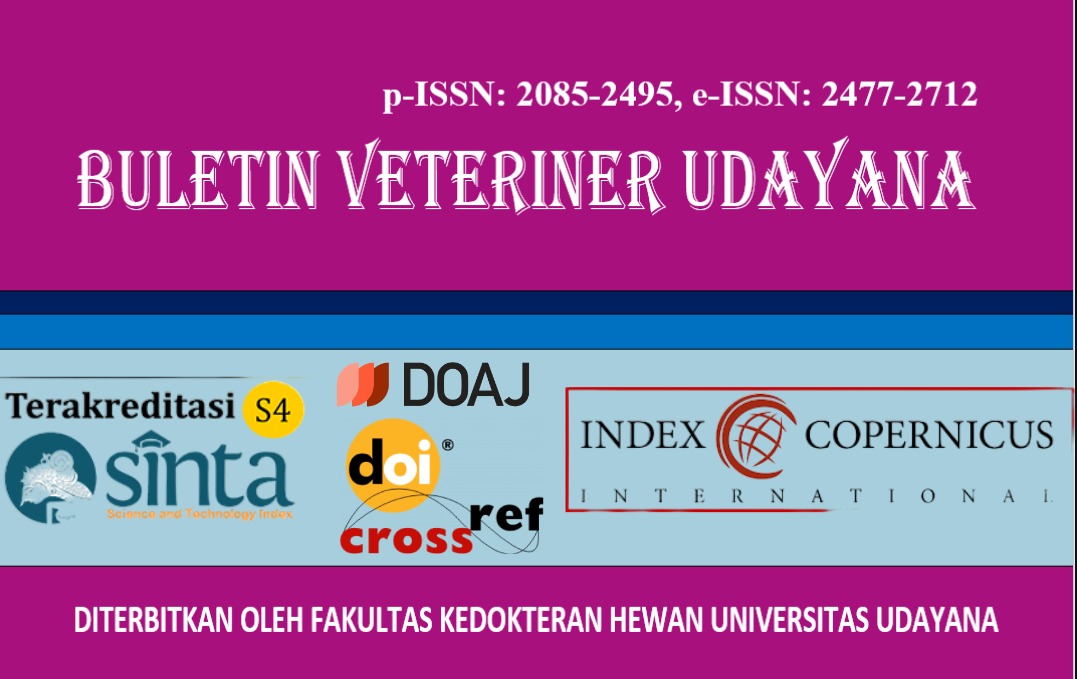SALMONELLOSIS CASE IN BROILER CHICKENS AT A CLOSED-HOUSE FARM IN DARMASABA VILLAGE, ABIANSEMAL, BADUNG, BALI
DOI:
https://doi.org/10.24843/bulvet.2025.v17.i03.p36Abstract
Salmonellosis caused by Salmonella sp. is a septicemic bacterial disease that commonly occurs in chickens. A 14-day-old broiler chicken from a closed house in Darmasaba Village, Abiansemal Subdistrict, Badung Regency, Bali was found to show general signs and clinical symptoms of conjunctivitis, decreased appetite, feather loss and dullness, stunted growth and greenish-white feces. To confirm the definitive diagnosis, laboratory examination is necessary. In this case study anatomical pathology, hispathological preparations, and bacterial identification were used. The examination results showed Enchepalitis, Pneumonia hemorrhagic, Myocarditis fibrinous, Hepatitis hemorrhagic, Glomerulonephritis hemorrhagic, Proventriculitis necrotican, and Enteritis hemorrhagic. Bacteriology test examination found Salmonella Typhimurium from the heart, lungs, and liver. The case animal was concluded to have Salmonellosis caused by Salmonella Typhimurium bacteria. Salmonellosis control can be done by improving biosecurity and cage sanitation, conducting chicken health management, controlling animal and human traffic, and using antibiotics wisely in accordance with veterinary recommendations to minimize the transmission of Salmonella Typhimurium bacteria through feed, water, and the environment.




